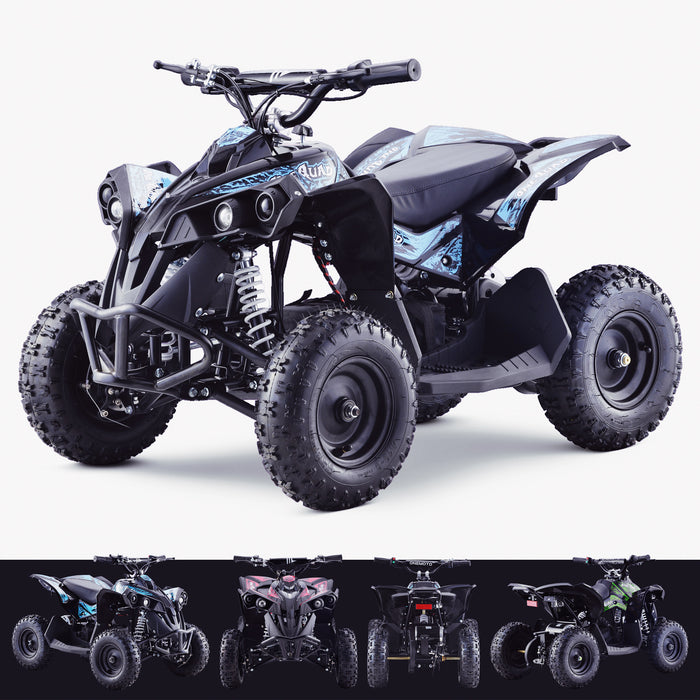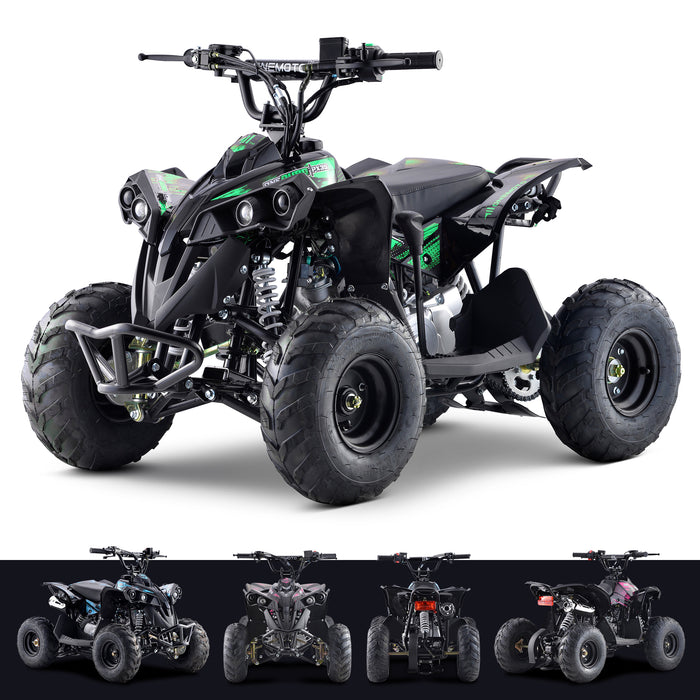
Updated: 8.5.25
The buzz around electric vehicles (EVs) is louder than ever. And it’s not just cars and motorcycles getting an eco-friendly upgrade—quad bikes are charging into the spotlight too.
But how do these electric newcomers stack up against traditional petrol-powered models?
Whether you’re a buyer, parent, or enthusiast, this breakdown of pros and cons across key areas will help you decide what suits you best.
1. Environmental Impact
Electric Quad Bikes
- ✅ Lower Emissions & Maintenance: Eco-friendly and budget-conscious, electric quads are quiet, clean, and require minimal upkeep.
- ❌ Battery Replacement Cost: The initial price can be higher and battery lifespan means eventual replacement expenses.
Petrol Quad Bikes
- ✅ Lower Purchase Price: More affordable upfront, with readily available service and parts.
- ❌ Higher Operating Costs: Fuel expenses and more complex maintenance can add up over time.
2. Performance & Range
Electric Quad Bikes
- ✅ Instant Acceleration: Torque on demand makes electric quads feel zippy and agile.
- ❌ Limited Range: Battery capacity restricts ride time, and charging takes longer than refueling.
Petrol Quad Bikes
- ✅ Greater Range: Perfect for long rides with quick refueling along the way.
- ❌ Slower Acceleration: Gradual power buildup may feel less exciting to some riders.
3. Safety & Regulations

Electric Quad Bikes
- ✅ Quiet Ride: Less noise means easier communication and awareness on the trail.
- ❌ Charging Access & Battery Risks: Limited charging stations and battery fire concerns are factors to consider.
Petrol Quad Bikes
- ✅ Easy Refueling: Fuel is widely accessible and keeps you going without much downtime.
- ❌ Pollution & Noise: Emissions and engine noise can impact health and environment.
4. Accessibility & Ease of Use
- Electric Quads: Simpler controls, quieter operation, and no engine warm-up make them beginner-friendly.
- Petrol Quads: Offer more mechanical feel and appeal to traditionalists and performance-focused riders.
Conclusion
Your choice depends on your priorities—sustainability and simplicity or range and raw power.
With innovations accelerating fast, tomorrow’s quads might blur these lines even more.
Until then, weigh the pros and cons and ride with confidence in what suits your style.
FAQ: Choosing Between Electric and Petrol Quad Bikes
Are electric quad bikes suitable for kids?
Yes! They’re quieter, easier to control, and often come with speed limiters—ideal for younger riders.
How long do electric quad batteries last?
Most batteries last 1–3 years, depending on use and charging habits. Regular care can extend lifespan.
Do petrol quad bikes need more servicing?
Generally, yes. Petrol engines have more moving parts and require regular maintenance like oil changes and tune-ups.
Can I ride electric quads in wet conditions?
Most are water-resistant, not waterproof. Avoid deep puddles and consult the manufacturer’s guidelines.
Need Help Deciding?
Browse our range of electric and petrol quad bikes at RiiRoo.com or hit up our Live Chat for advice!







Share:
The Impact of Weather on Quad Biking: Tips for All Seasons
Advanced Quad Bike Riding Techniques for Experienced Riders